
The old town of Antalya, known as Kaleici (Kaleiçi) is the historical center and heart of Antalya, which stands out with sights, museums and the remains of fortress walls, inside which, on narrow streets, you can see buildings of different eras.
The Old Town is also known as Old Antalya, and it reflects the multifaceted and undoubtedly rich history of the city of Antalya.
The name "Kaleici" (Kaleiçi) means "Inside Calais" or "Inner Calais", where the word "Calais" itself means a castle or fortress. For this reason, the old town is also called the Antalya Fortress or Antalya Castle (Antalya Kalesi).
In Kaleichi there are narrow streets, and there are about 3,000 houses with tiled roofs. These buildings belong to the Roman, Byzantine, Seljuk, Ottoman and modern Turkish Republican eras. However, now most of the buildings belong to the transformations and restorations of the late 18th and 19th centuries. The characteristic constructions of houses with masonry made of stone and wood, as well as wooden bay windows and decorated with ornaments, not only give an idea of the architectural history of Antalya, but also best reflect the lifestyle, traditions and customs of the region.
Today, most of the buildings in the Old Town of Antalya are adapted for shops, souvenir shops, cafes, bars, restaurants, nightclubs and accommodation facilities (hotels, apartments)
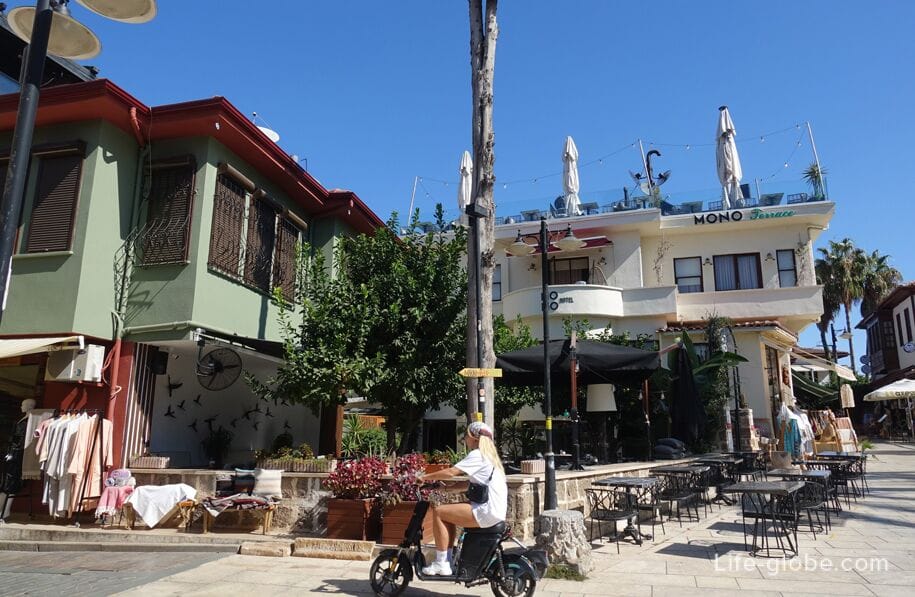
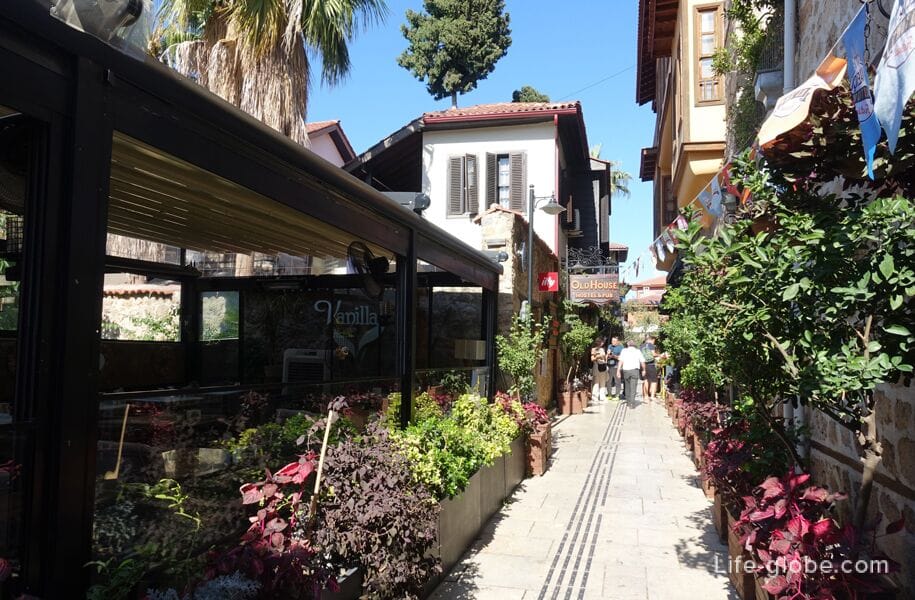
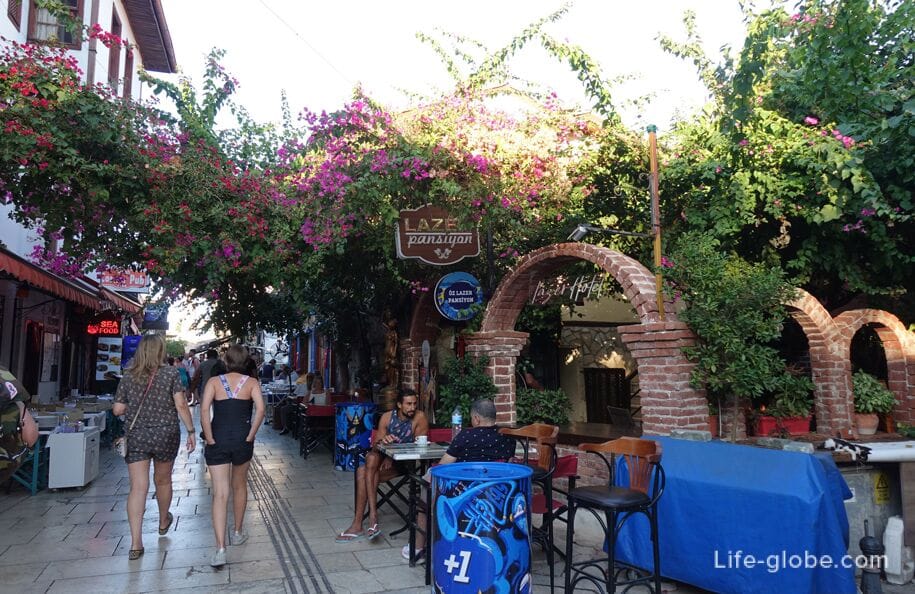
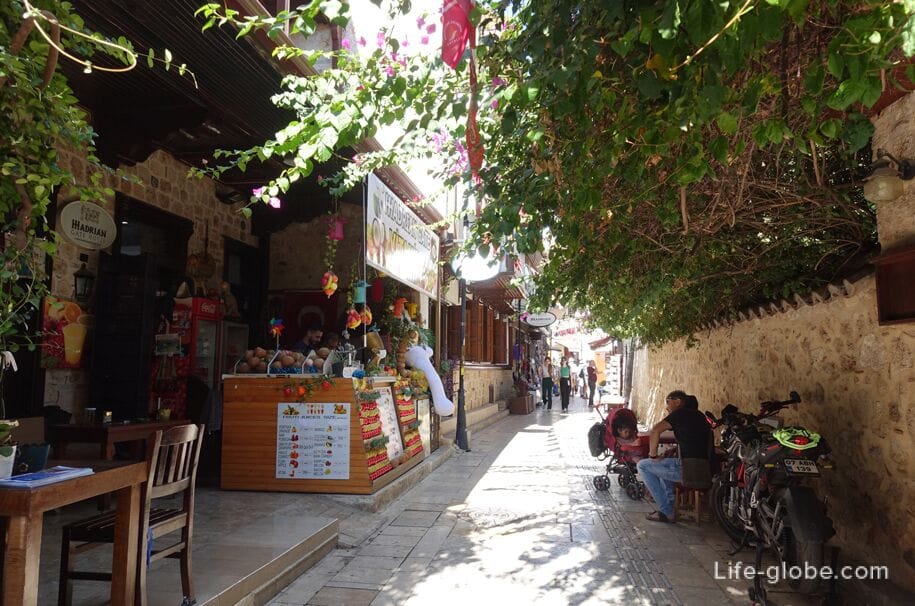
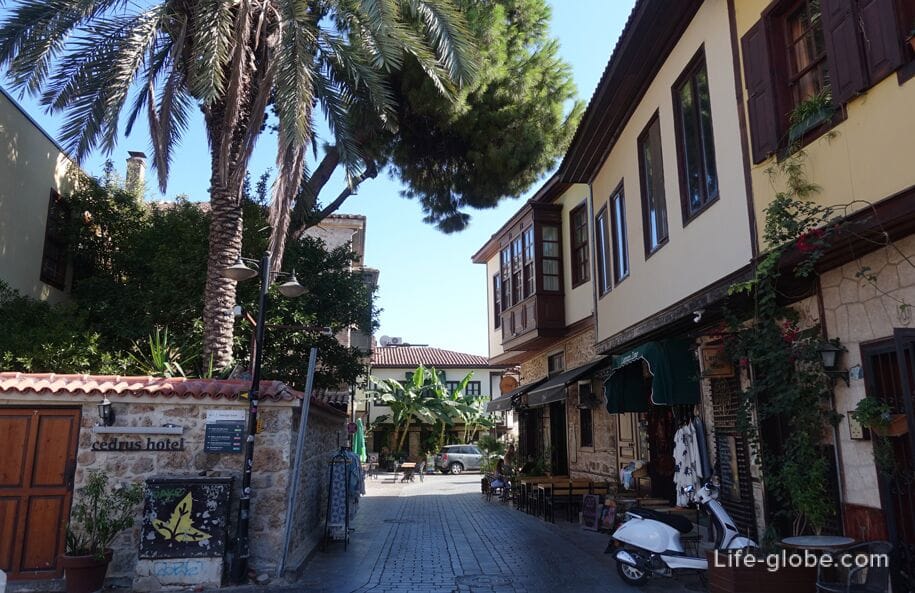
You can admire the panoramas of the Old City of Antalya from the viewing terraces Republic Square and from the observation deck of the upper part panoramic elevator connecting the old port of Antalya with Kaleichi Street and Republic Square.
Viewing terraces and a panoramic elevator are free for visits.
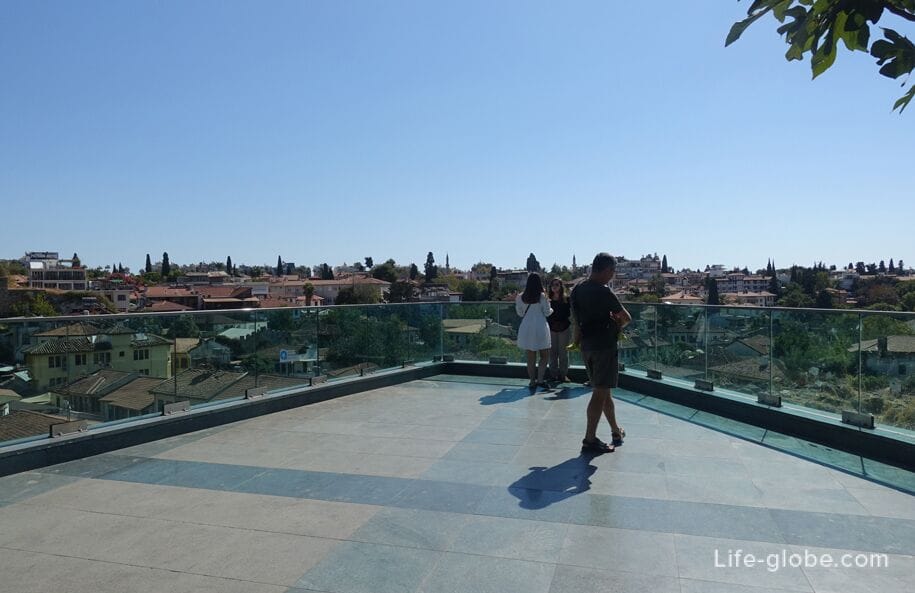
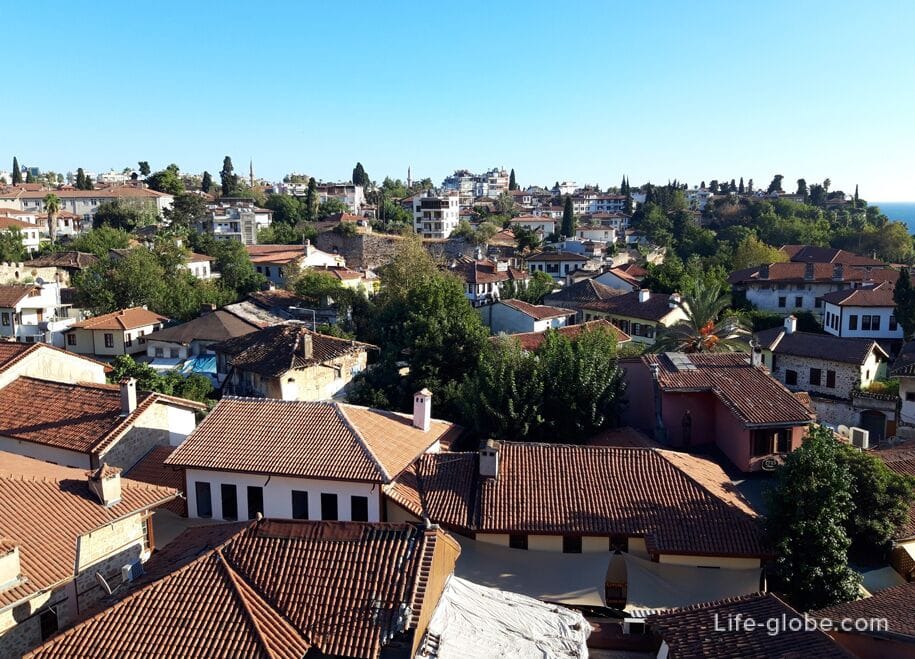

Until modern times, almost the entire city was enclosed within its walls.
The fortress wall of Antalya with defensive bastions, towers and gates has been known since ancient times. It was originally built in 159 BC by order of King Attalus II. The walls were external and internal, which separated the settlements. The walls and other fortifications were mostly destroyed and only small remnants of them remain today, which are an important historical landmark of Antalya.
The best remnants of Antalya 's defensive walls include
Hadrian's Gate with towers and part of the walls;
Clock tower with nearby towers and ruins of walls;
it is best to see and feel the full power of the fortress walls in the old port of Antalya, which is located under the walls. On part of the wall at the port, you can climb and admire the panoramas of both the port itself and the boundless Mediterranean Sea and the rocky precipitous shores of Antalya. Learn more about gates, towers, walls and climbing the wall…
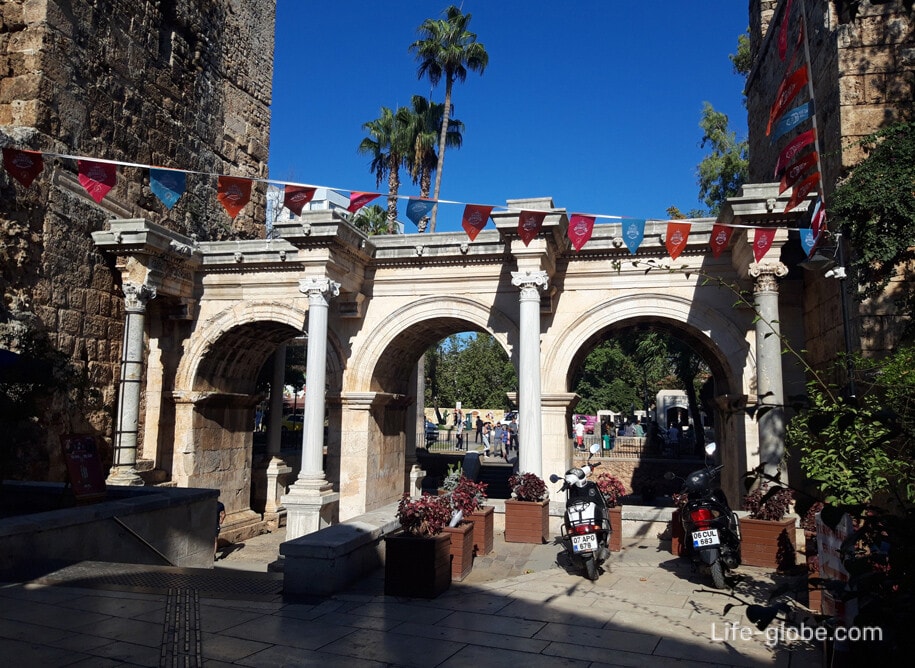
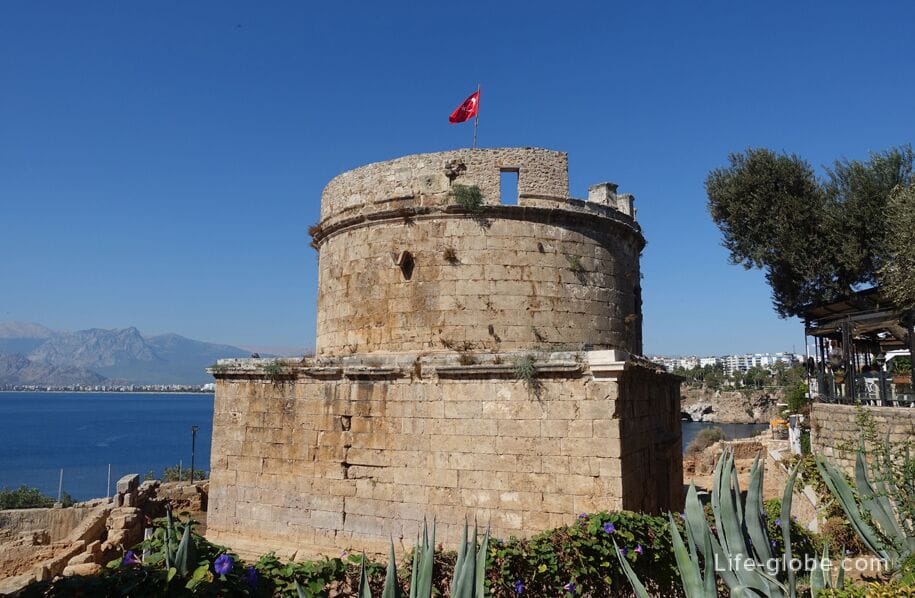

On the Mediterranean side, under the old Anatolian fortress walls is the Old Port of Antalya (Kaleiçi Yat Limanı Antalya) - a Roman-era harbor, which is part of Kaleici.
Today, the port is, for the most part, a tourist area with places for walking and recreation, restaurants, a park with a playground, an amphitheater, shops, monuments, museums, a small Iskele Mosque with a spring, panoramic elevator, travel agencies, parking and toilets. Learn more about the old port of Antalya...


Near the old port, under the walls and rocks, there is a small paid beach of Mermerli (Mermerli Plajı) with a restaurant and spectacular views. More about the beach and the restaurant of Mermerli…
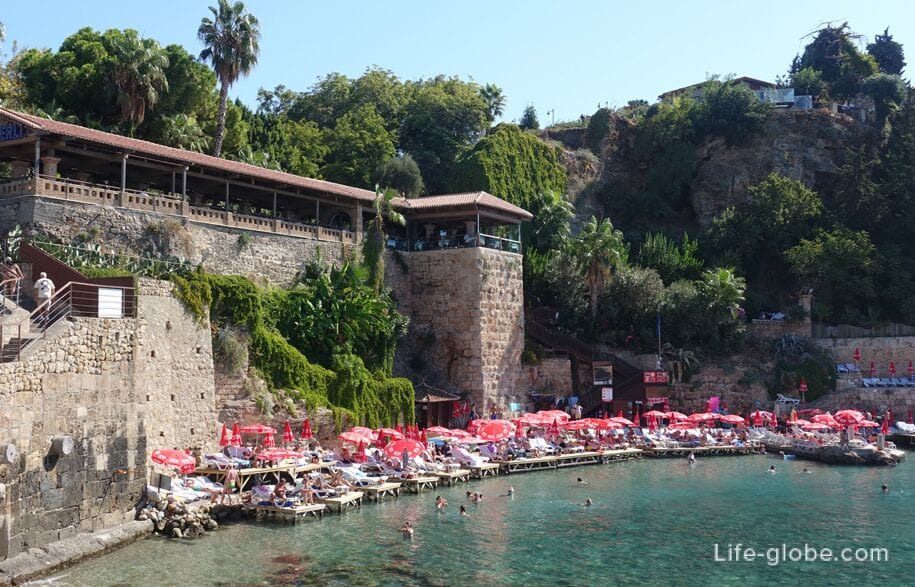
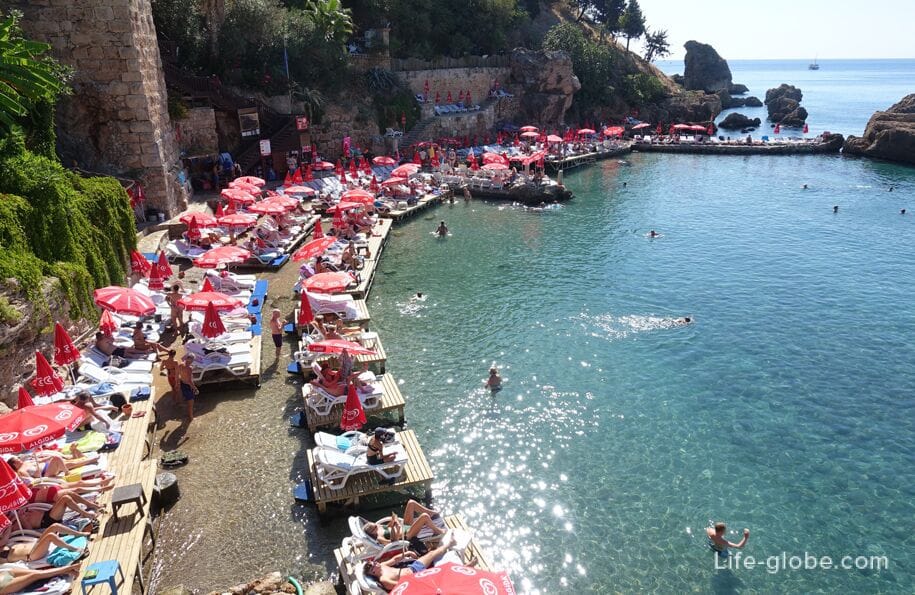
Of the few green areas in Kaleichi, Kecili Park attracts special attention, which translates as a Small park.
This small cozy park has paths, places to relax, a fountain, a sculpture of two goats, as well as observation terraces and a glass observation deck, which offer gorgeous views of the sea, the old port, the beach of Mermerli, the rocky coast of Antalya and the mountains. More about Kecili Park…
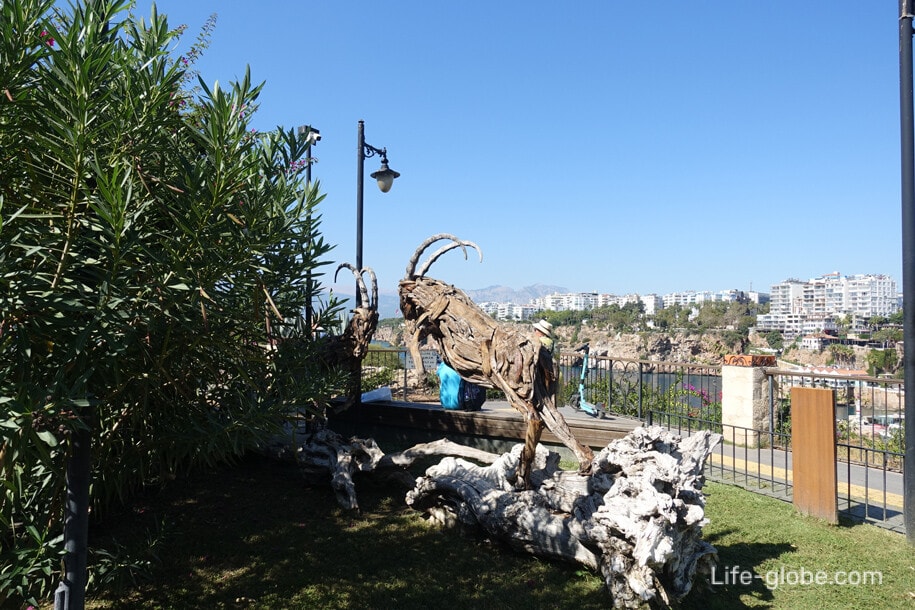
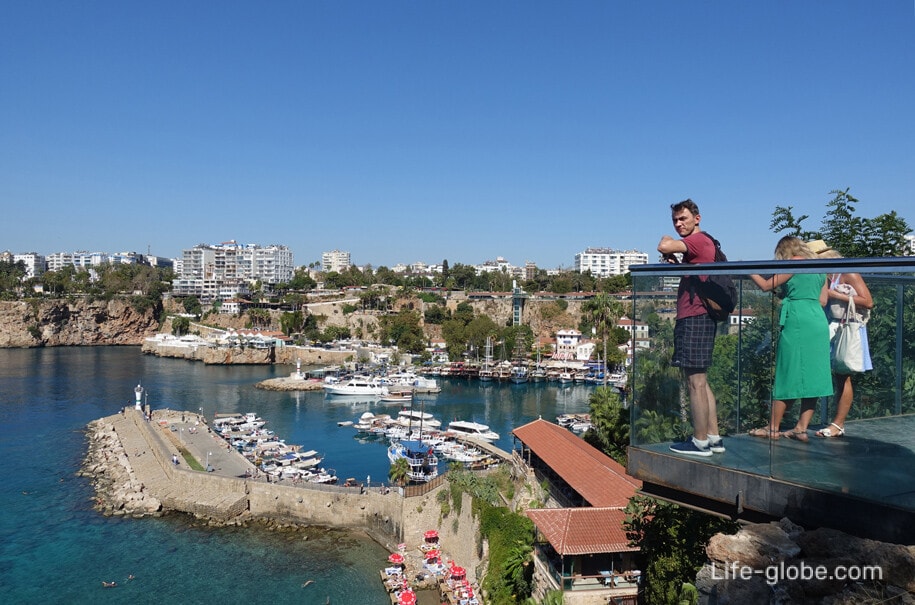
Yivli Minaret Mosque (Yivliminare Cami), which is known for the detached high Yivli minaret.
The minaret and the mosque were named "Yivli", which means "Fluted", because the minaret consists of eight fluted groups.
Today, a mosque with a minaret is one of the symbols of Antalya, as well as one of the earliest examples of Islamic architecture in the city.
Entrance to the mosque is free. More about Yivli Mosque and Minaret…
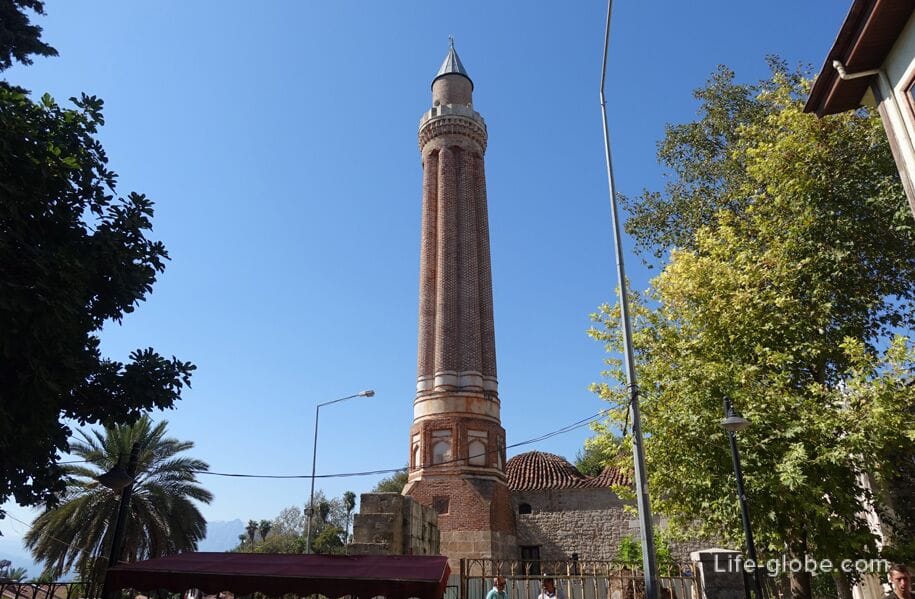

The Yivli Minaret Mosque is part of the kulliye - a complex of religious buildings.
Part of the buildings of the complex, located near the mosque and minaret, today are the Mevlevihane Museum (Mevlevihane Müzesi), which consists of the Mevlevi dervish monastery with an exhibition of items and clothes of dervishes, a hammam, two mausoleums, a cemetery, a madrasah and ruins.
Admission to the museum is free. More about the museum complex…

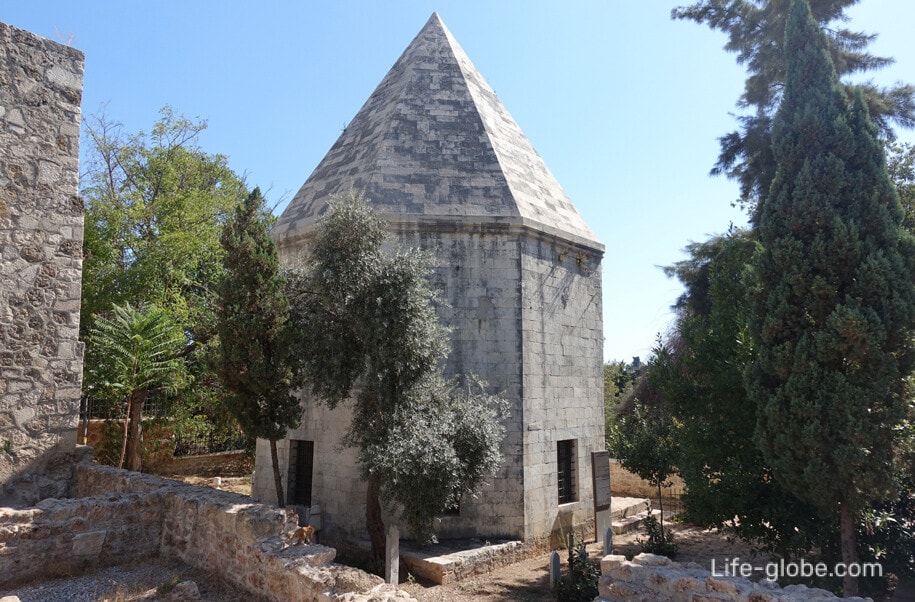
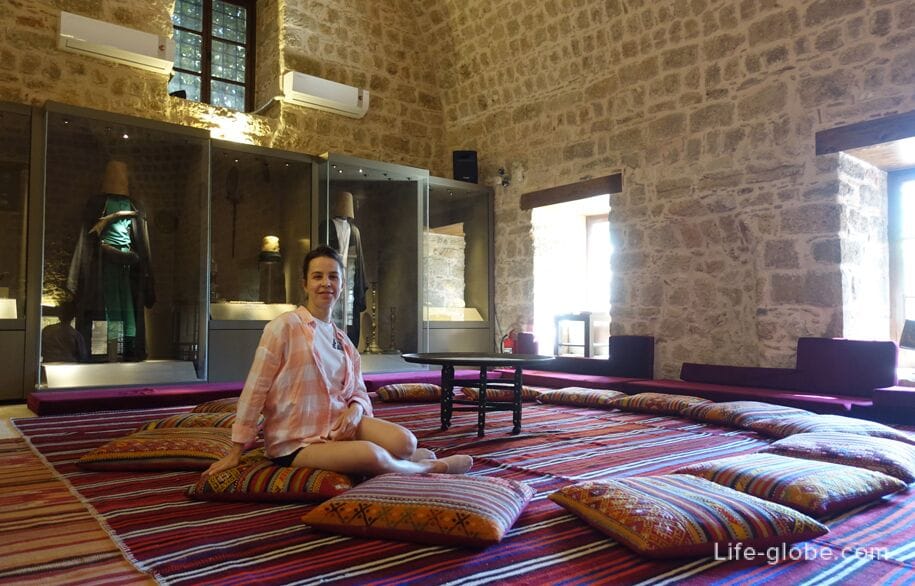
The mosque of Shehzade Korkut (Şehzâde Korkut Camii), part of which is the Kesik Minaret (Kesik Minare).
The history of the mosque dates back to the 2nd century AD, when it was built as a Roman temple. Subsequently, the shrine was twice a church and a mosque.
Today, this historically rich building functions as a mosque and as a museum, which has absorbed the traces of seven civilizations, which can be seen both outside and near the mosque, and inside.
Entrance to the mosque is free. More about the mosque and minaret…
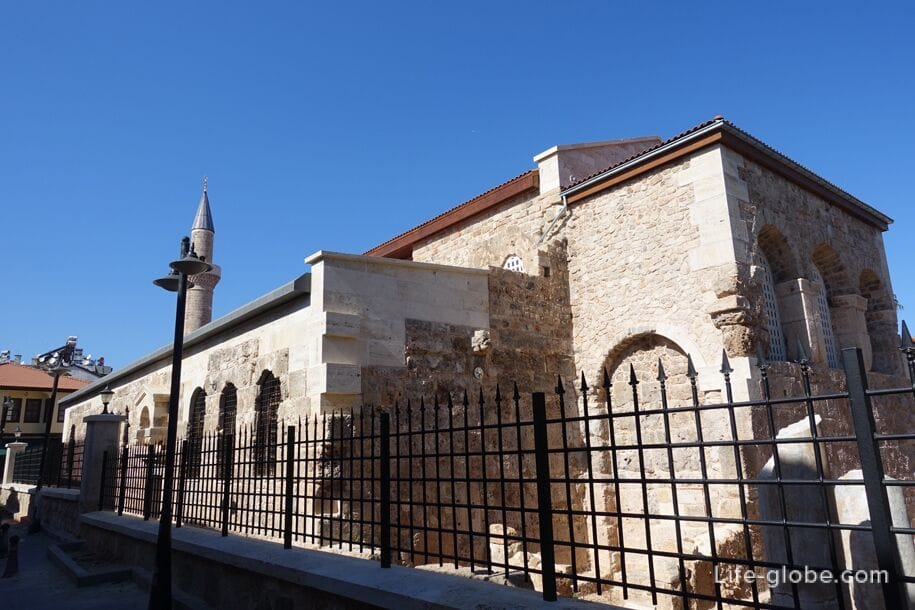
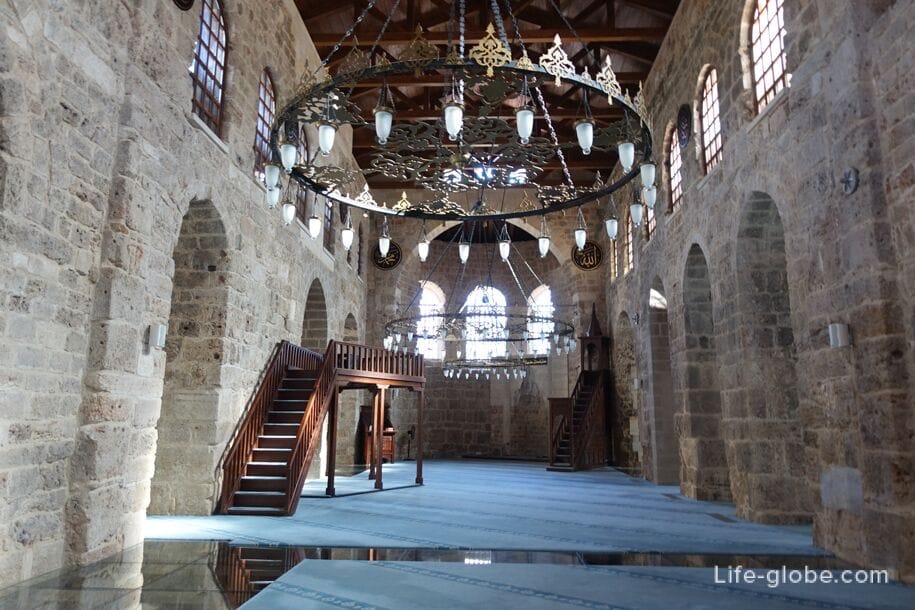

Ethnographic Museum of Antalya (Antalya Etnografya Müzesi), consisting of two 19th-century mansions and containing Turkish-Islamic artifacts and interior items reflecting the home life of Antalya during the Ottoman Empire.
Admission to the museum is free. More about the museum…
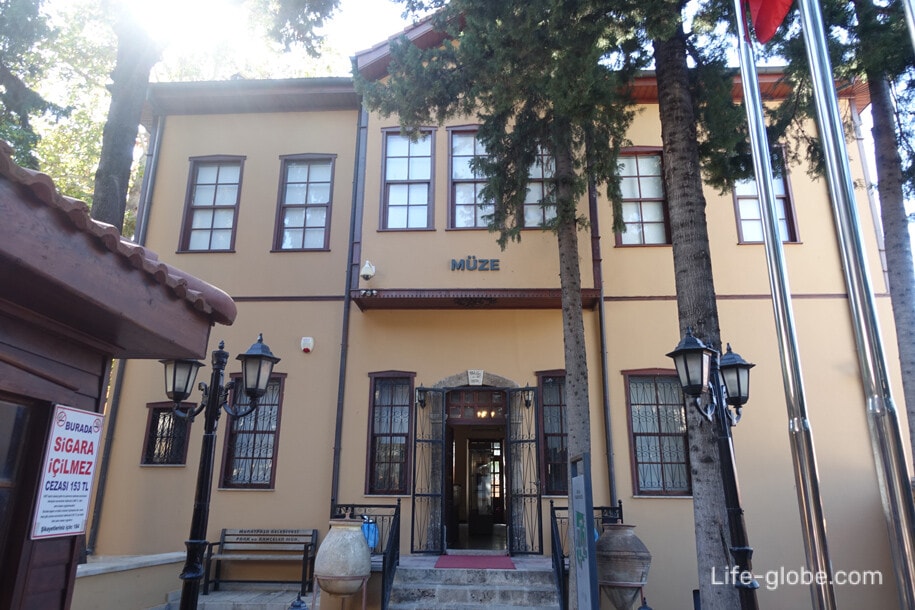

The Museum of Kaleichi Suna and Inan Kyrach (Suna-Inan Kıraç Kaleiçi Müzesi) is an ethnographic house-museum, which consists of two historical buildings (the house and the former Greek Orthodox Church of St. George / Aya Yorgi) with a courtyard.
The museum's expositions reflect Turkish traditions and the spirit of Turkish folk culture with its most striking elements. A collection of Canakkale ceramics is on display in the former St. George's Church, and short thematic exhibitions related to local cultures are held in the women's living room on the upper floor.
Entrance to the museum is paid. More about the museum of Suna and Inana Kyrach…
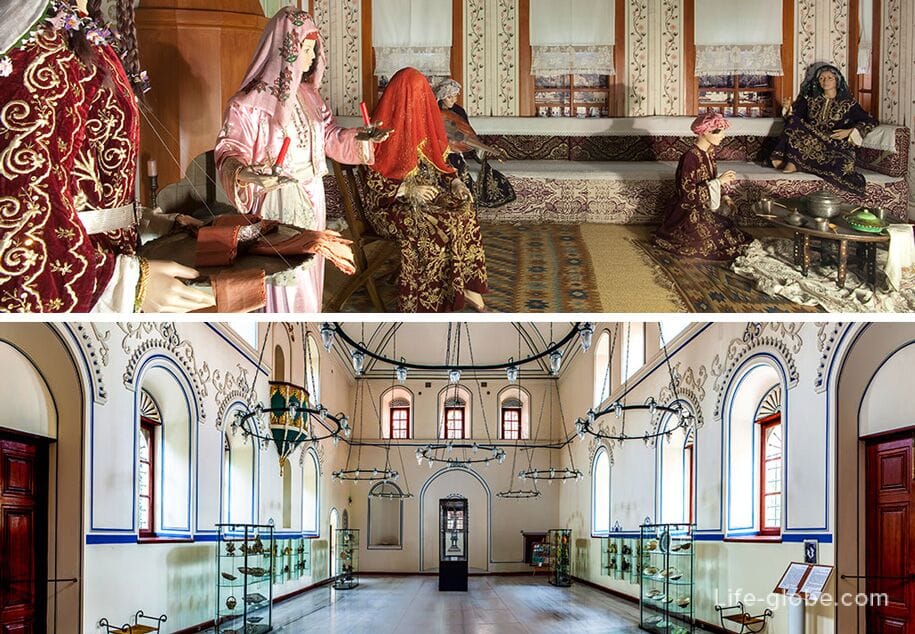
Tekeli Mehmet Pasha Mosque (Tekeli Mehmet Paşa Cami), which is one of the most important and beautiful Ottoman mosques in Antalya.
The mosque was erected in the late 16th - early 17th centuries by order of the Grand Vizier of the Ottoman Empire Tekeli Lala Mehmed Pasha during the reign of Sultan Mehmed III. At that time, the mosque was the main mosque of the city.
The exterior and interior of the mosque are notable for stone tiles and colored tiles with calligraphy.
Entrance to the mosque is free. More about Tekeli Mehmet Pasha Mosque…
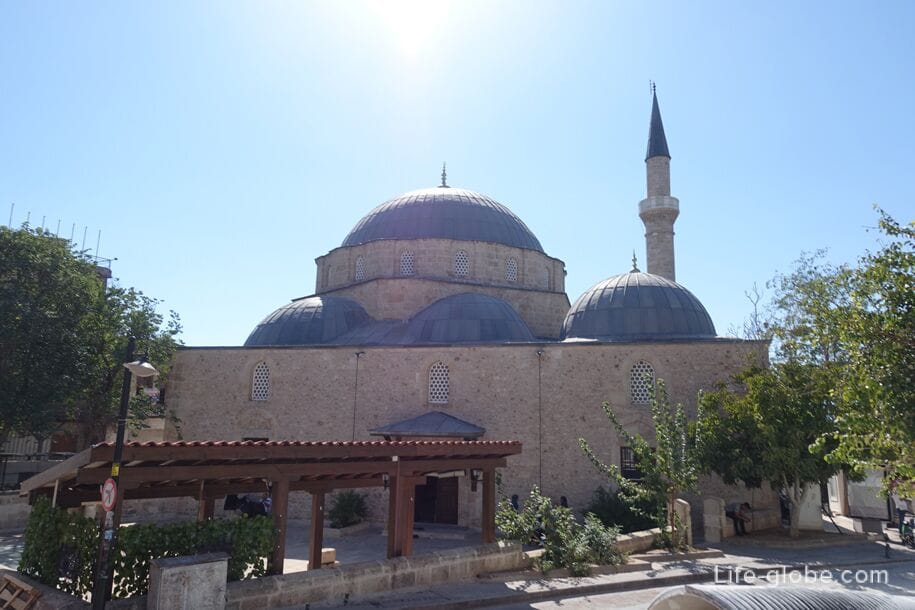
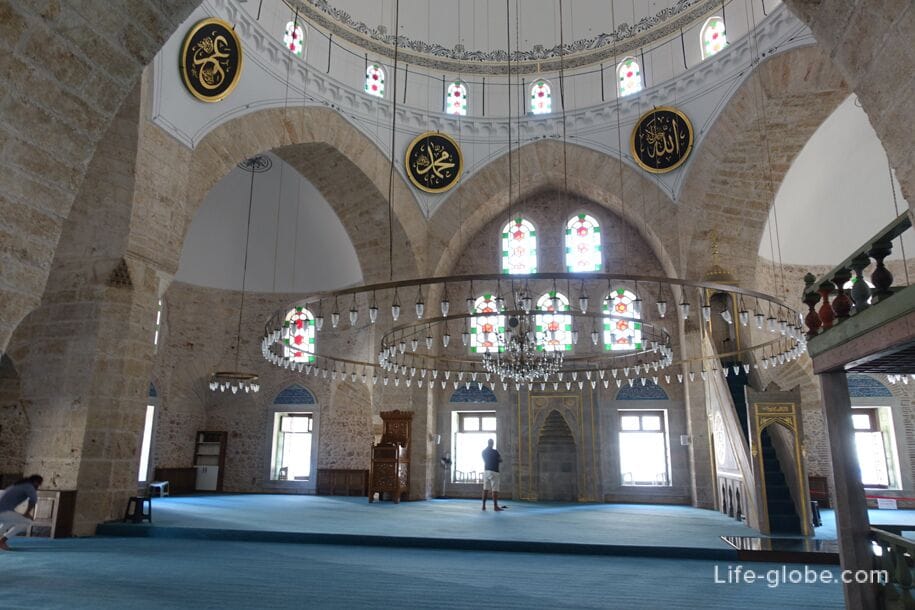
Sultan Alaaddin Mosque (Sultan Alaaddin Camii), built in 1834 as the Greek Orthodox Church of Panagia (Panagia Greek Orthodox Church) for the Greek community of Antalya.
In 1922-1934, the building was used as an archaeological museum. In 1958 it was transformed into a mosque, a mihrab and a minaret were added.
Many parts of the building keep secret traces of the church, parts of which are hidden or closed, since it is now a mosque.

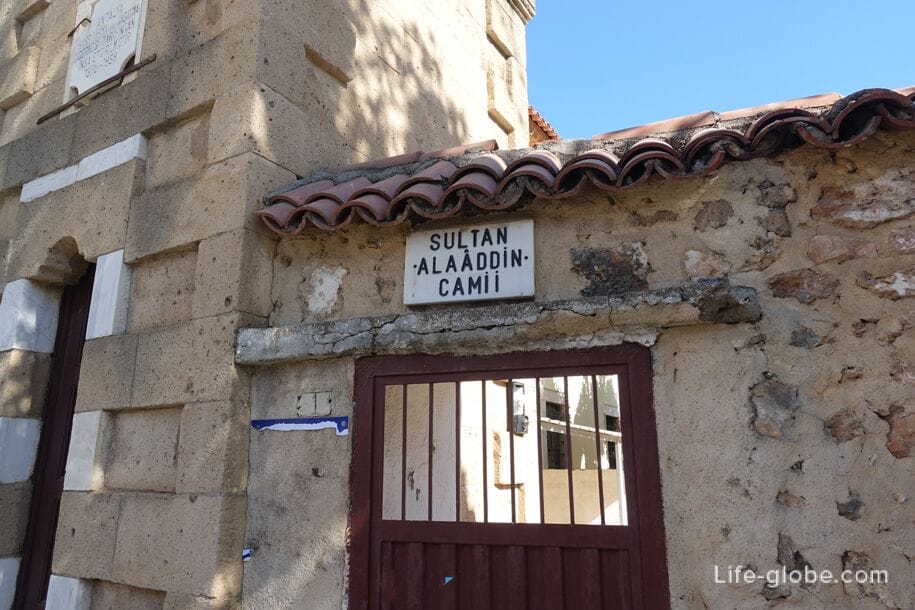
The Orthodox Church of St. Alipius (Yenikapı Rum Kilisesi), which is the center of the Christian community life of the Antalya coast for Orthodox Christians living in the region who speak Slavic languages.
According to the ktitor inscription, the Danilidis family built and dedicated a church to St. Alypius Stylites, but it was decided that a throne in honor of the Apostle Paul would also be consecrated in the renovated church, because Antalya is the place where the Apostle Paul preached during his first apostolic journey.
The temple was founded in the Greek quarter of Kilintsarslan on August 1, 1843, and construction was completed on May 6, 1844. Most likely, the temple was the house temple of the Danilidi family and after the events of 1922 and after the eviction of the Greeks from the city, it became the property of a private person. The temple building was left to the mercy of fate for 75 years.
Since 2009, restoration work has been carried out in the church. The church was consecrated on Sunday, September 3, 2011.
Part of the relics of his patron saint, the Monk Alypius Stylites, as well as the venerated image of the icon of the Most Holy Theotokos "Kikk-Attali" are kept in the temple.
Temple website: antalya-orthodox.com.
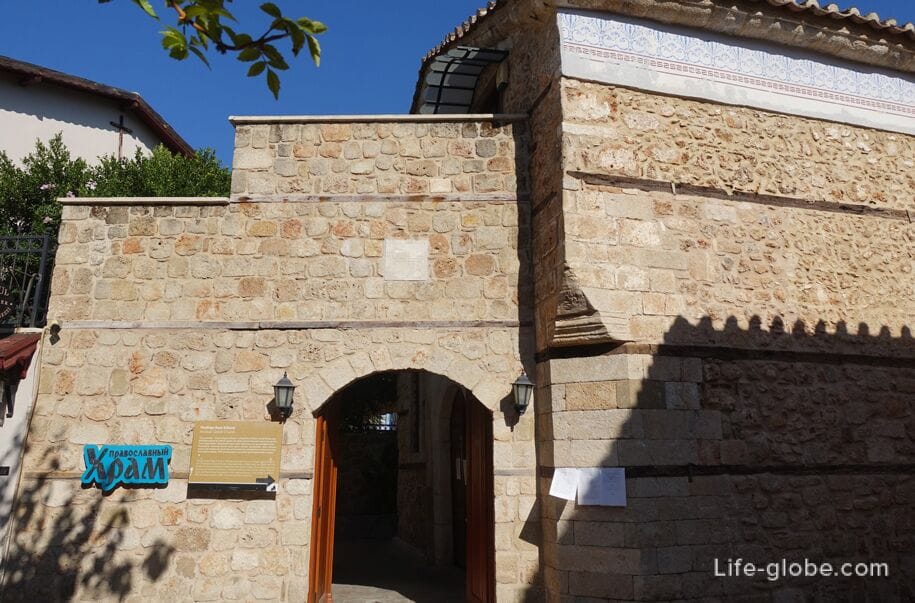
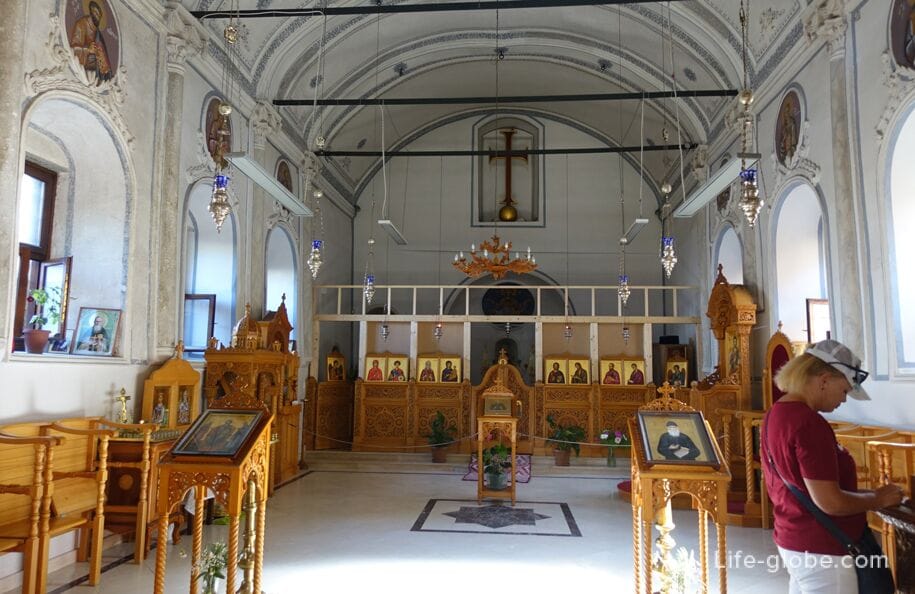
The historical building of the hammam (Turkish baths) of the 19th century, located at the address: Kılınçarslan, Hamam Sk. No:29, 07100 Muratpaşa/Antalya, Turkey.

In the old city of Antalya, all the streets are beautiful and good for walking, but one street in the guidebooks is especially highlighted - this is Umbrella Street Antalya.
Umbrellas Street is completely pedestrian, and it is quite small - its length is about 100 meters. But the street stands out because many colorful umbrellas are placed above it.
Along the street there are low historical buildings, in which there are cafes and restaurants with outdoor tables, as well as several shops. More about the street with umbrellas…
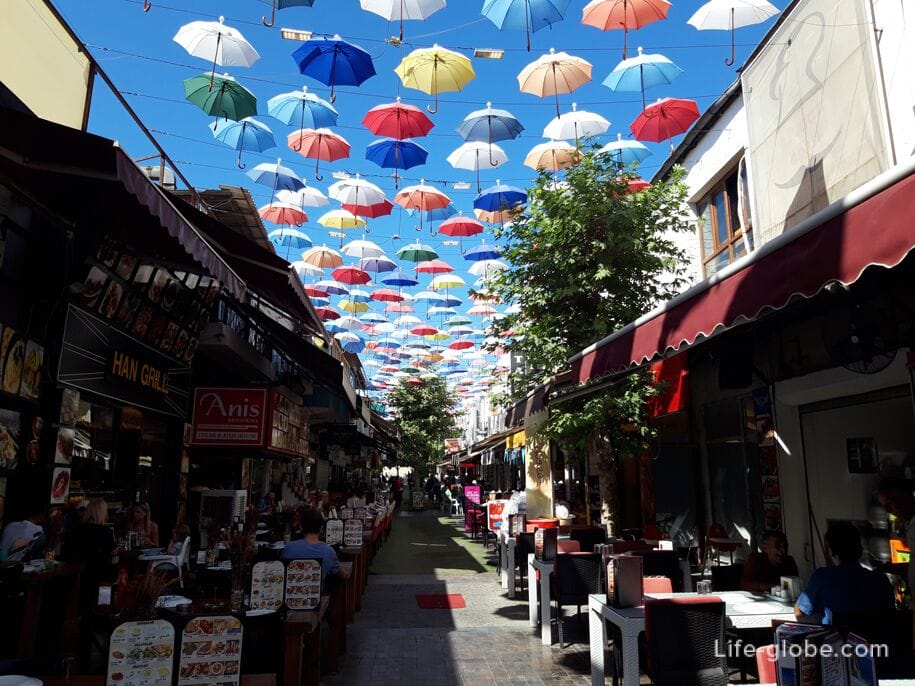
On the streets of Kaleichi there is a variety of different shops where you can buy both food and clothing, as well as various souvenirs, Turkish products and sweets.

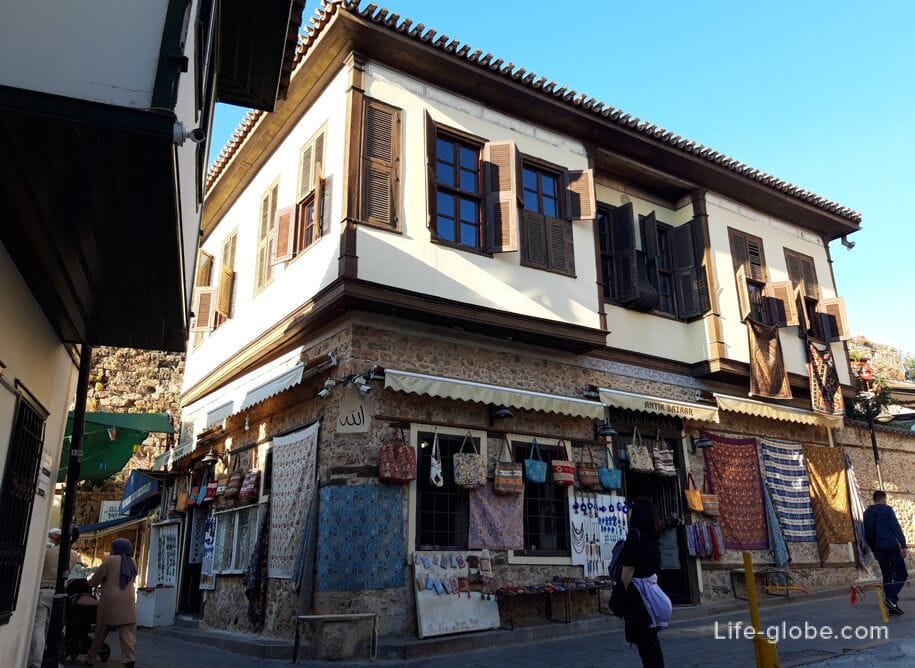
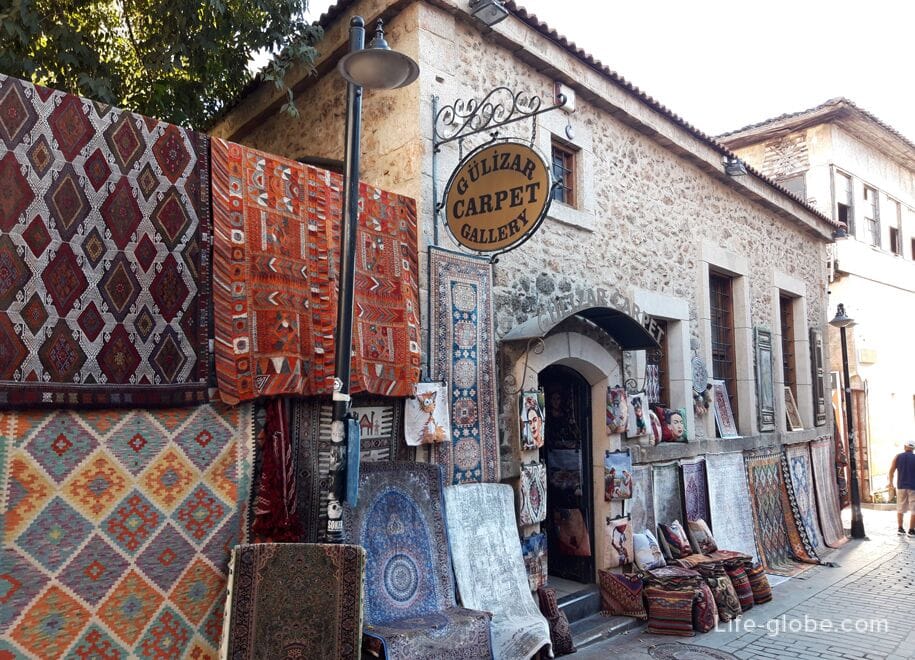
In addition to shops and retail outlets, there are various cafes, bars and restaurants along the streets. There are also night clubs.
In cafes and restaurants you can taste dishes of both Turkish and other cuisines of the world, including fish and seafood, salads, soups, meat, poultry, vegetables, pizza, kebabs, etc.
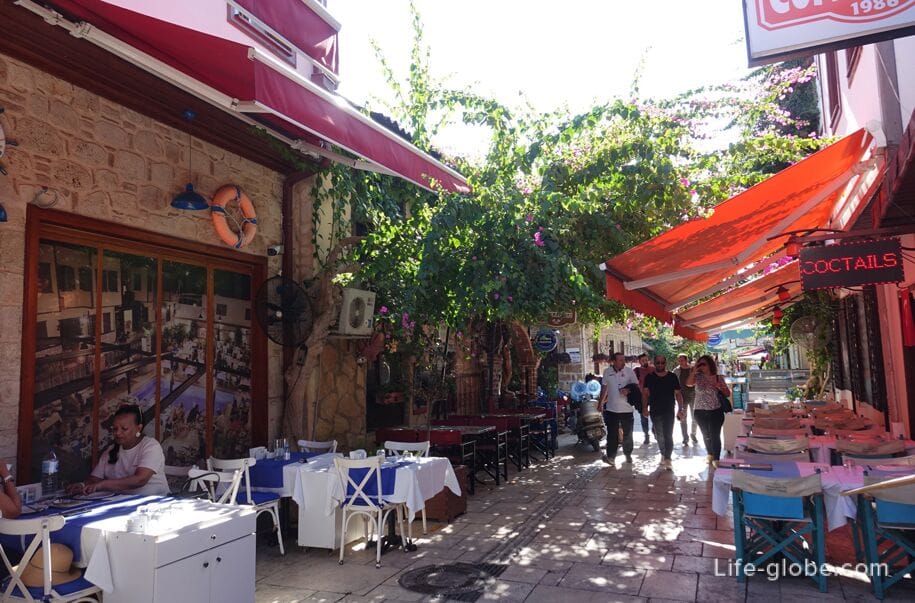
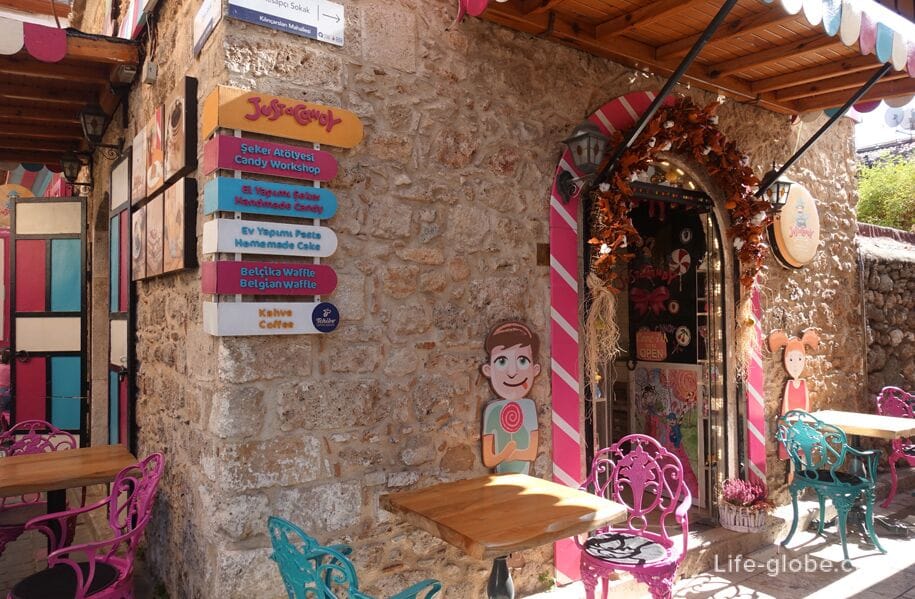
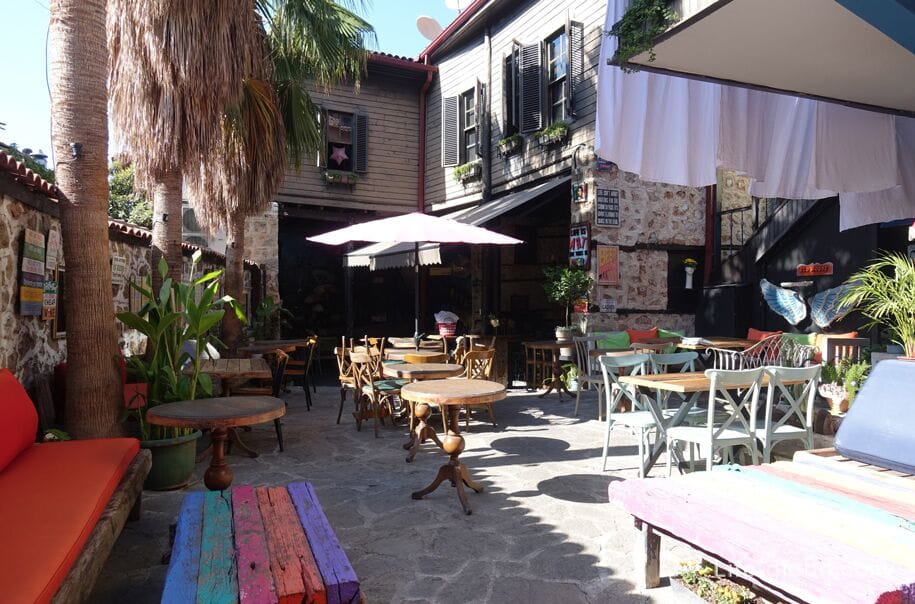
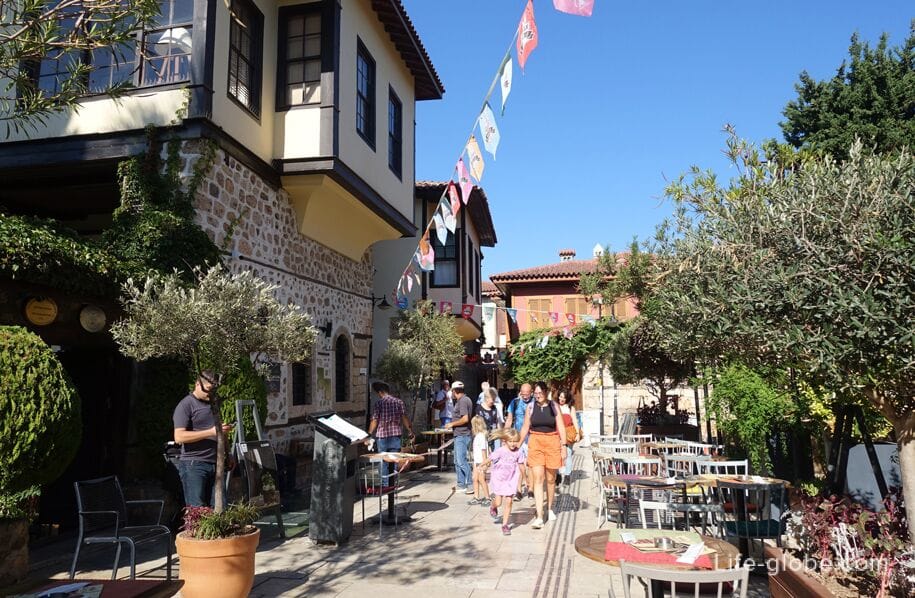
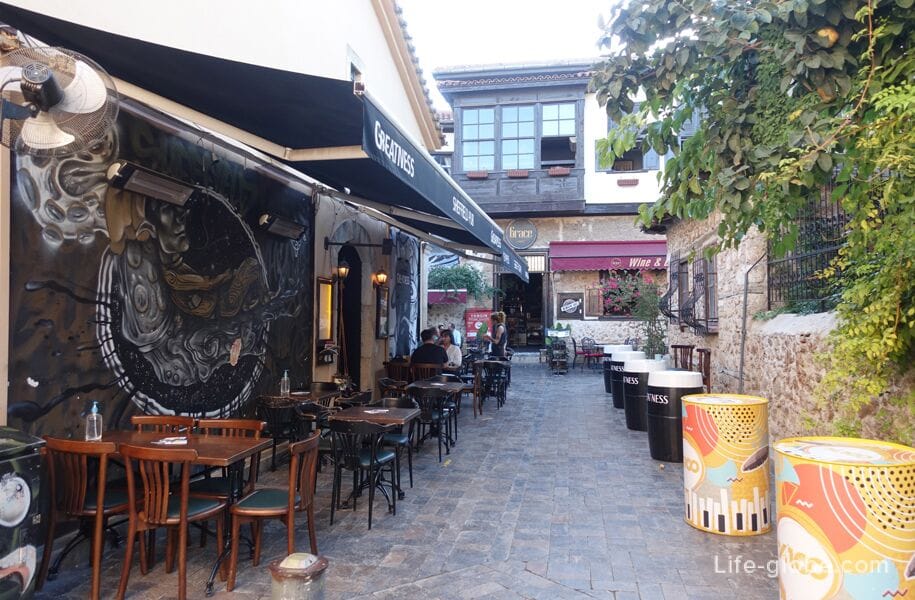


The best "beer street", in my opinion, where there are restaurants where you can taste juicy burgers, steaks, etc., as well as drink Turkish, German, Belgian, English, etc. beer, both draught and bottled, is that part Hesapçı Sk street, which is located closer to the Shehzade Korkut Mosque with the Kesik Minaret.
In addition, in the evenings there is an atmosphere corresponding to the beer streets and pubs.
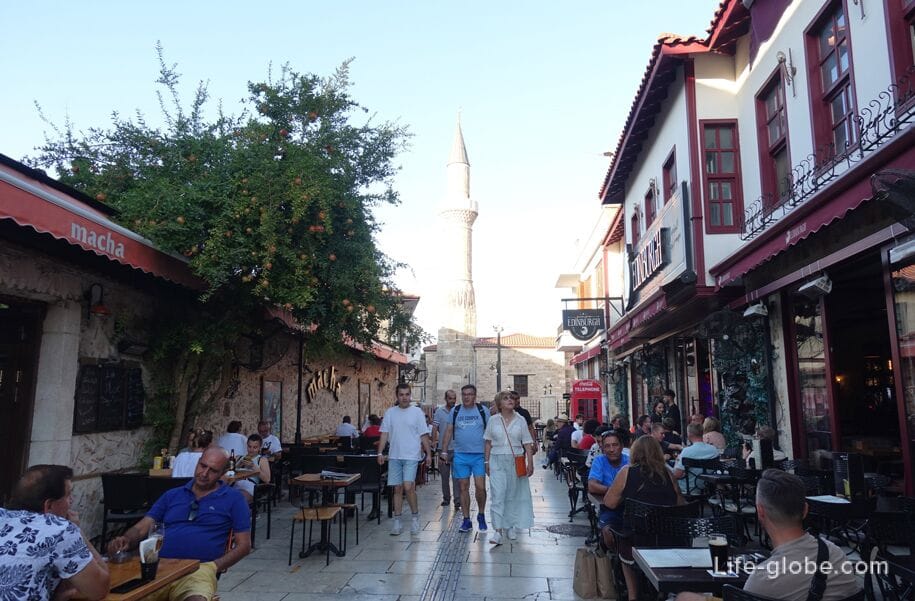
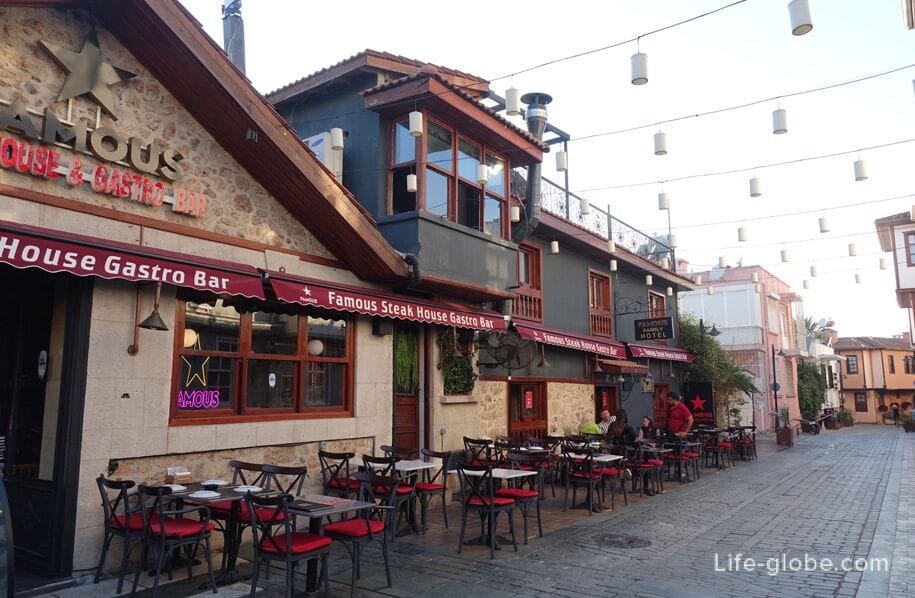
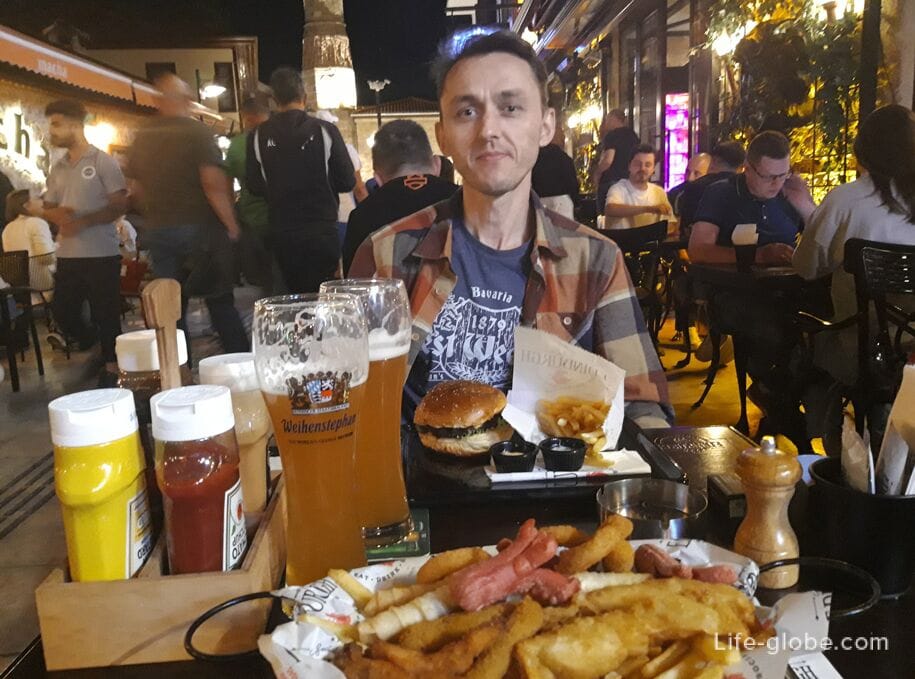
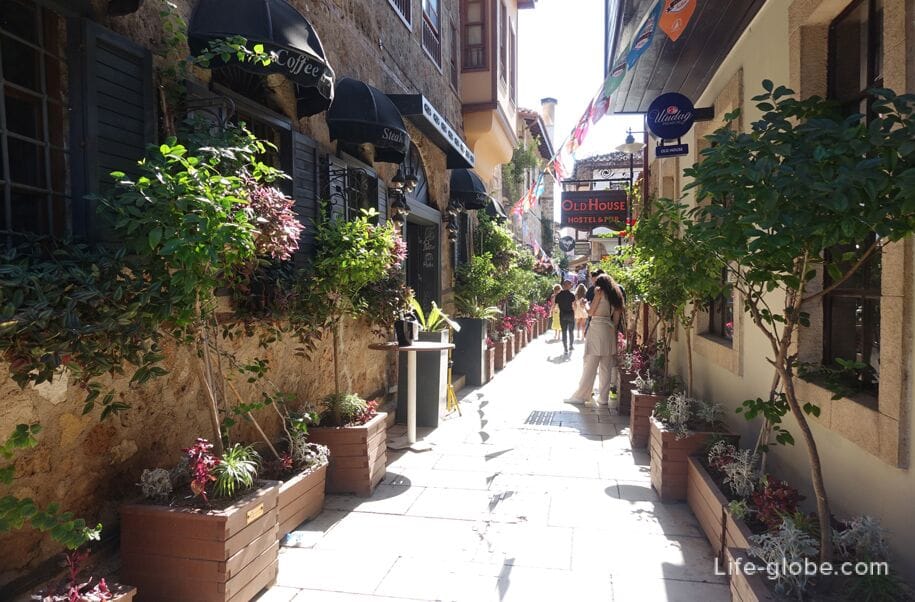
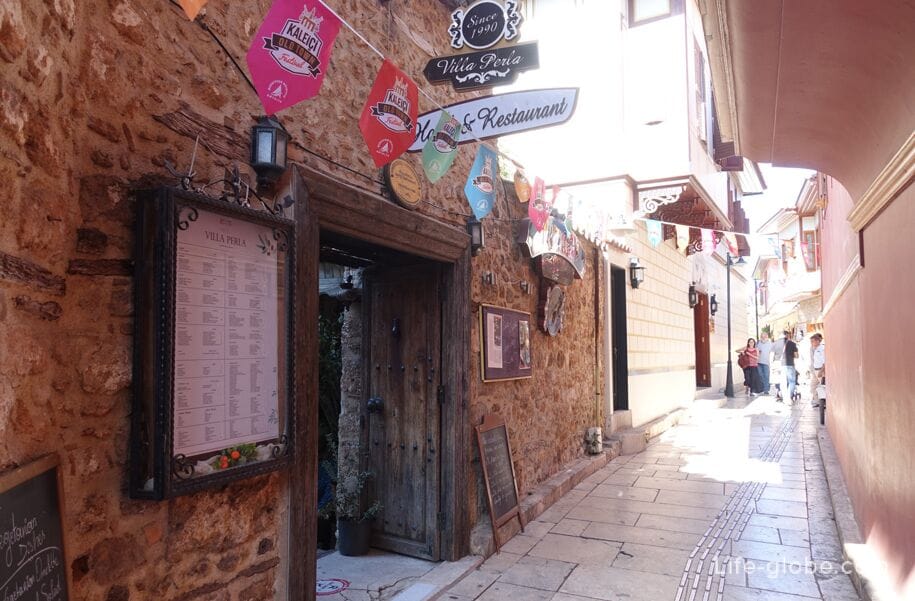
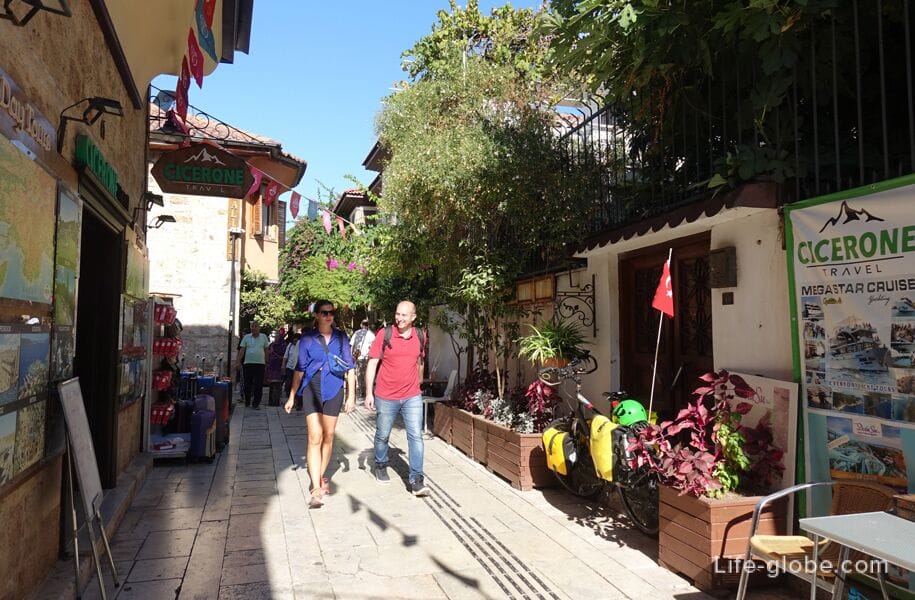

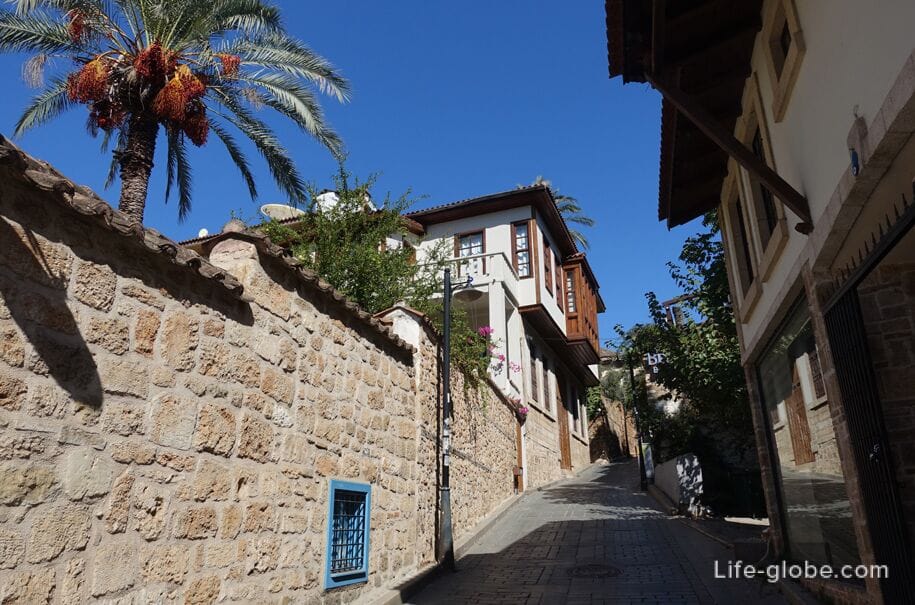
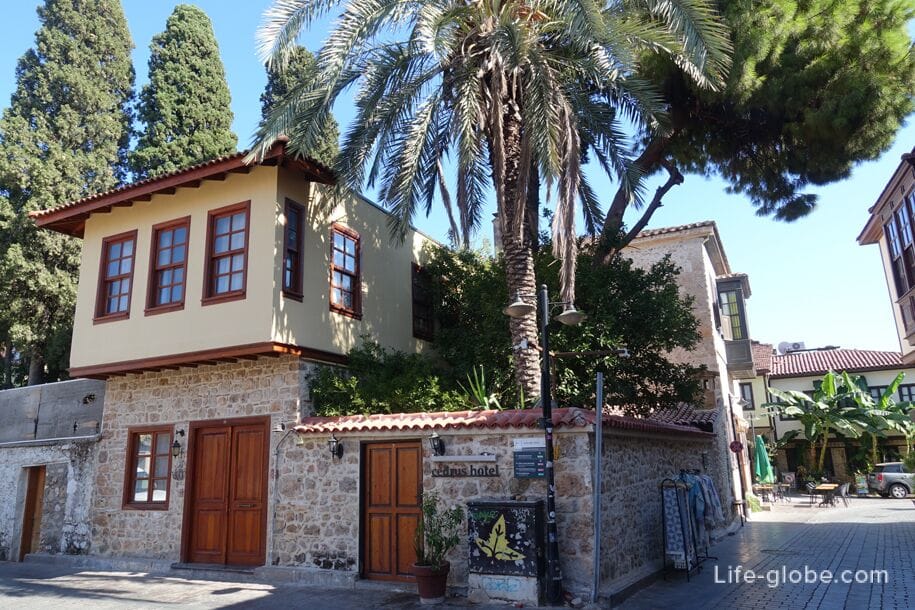

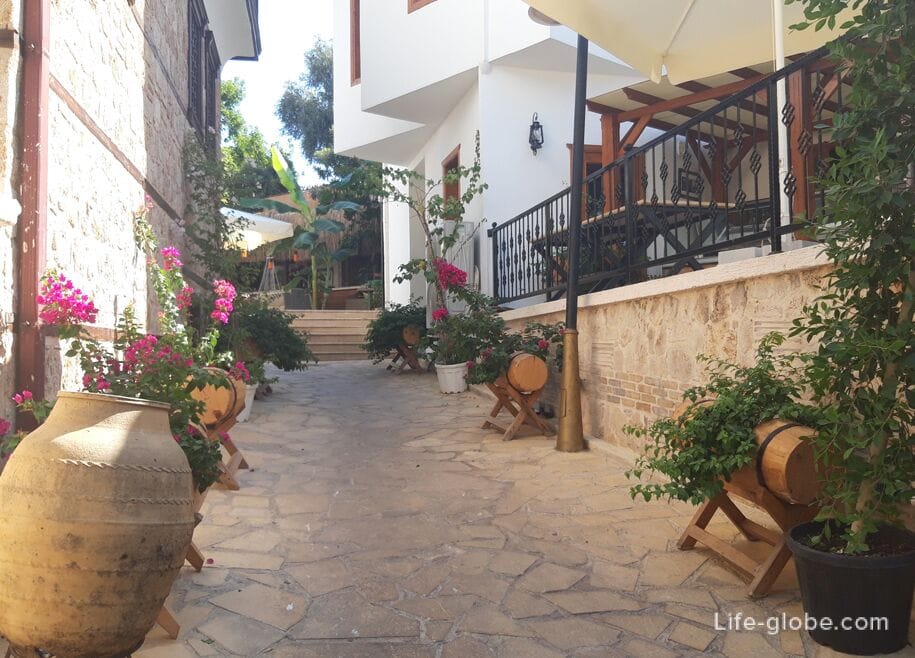
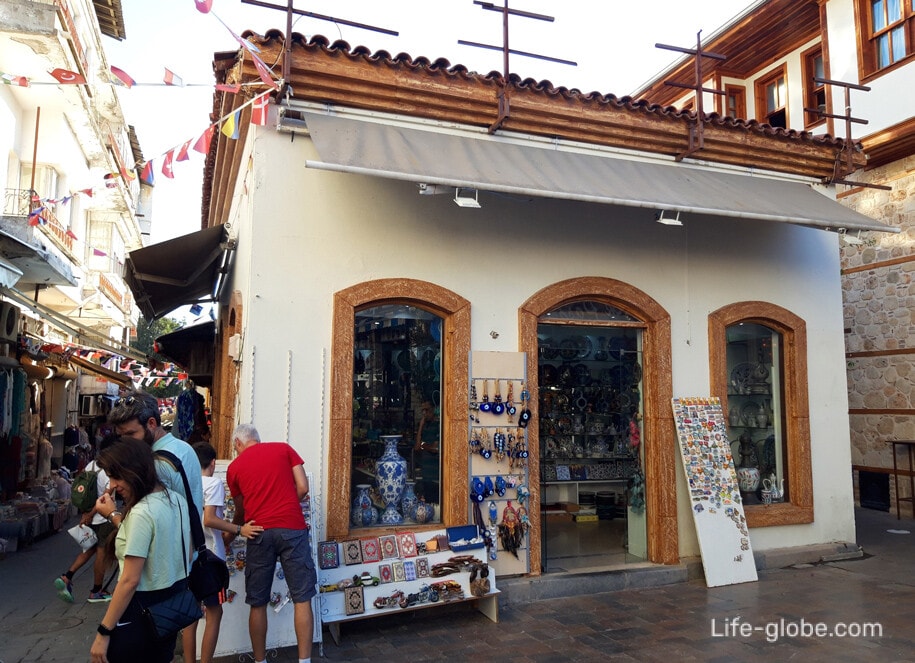
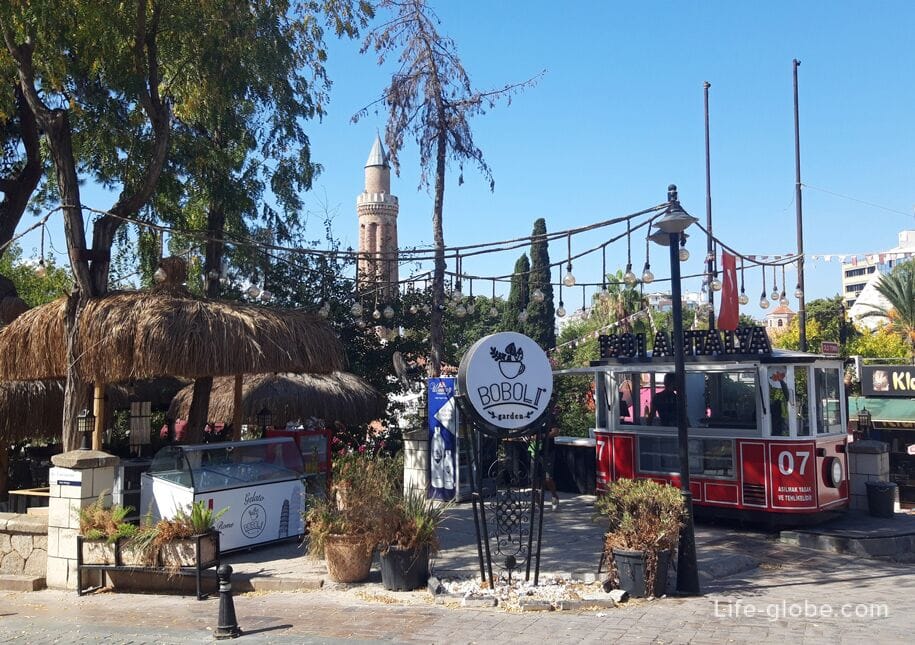
Kaleichi district is located in the central-eastern part of Antalya.
It stretches along the Mediterranean coast. On the other three sides Kaleichi is surrounded by a shady coastal Karaalioglu Park, beautiful Ataturk Boulevard and historical Jumhuriyet Street.
According to the streets and near the park Karaalioglu runs retro tram "Nostalzhi", which connects the historical center of Antalya with the picturesque and long Konyaalti beach.

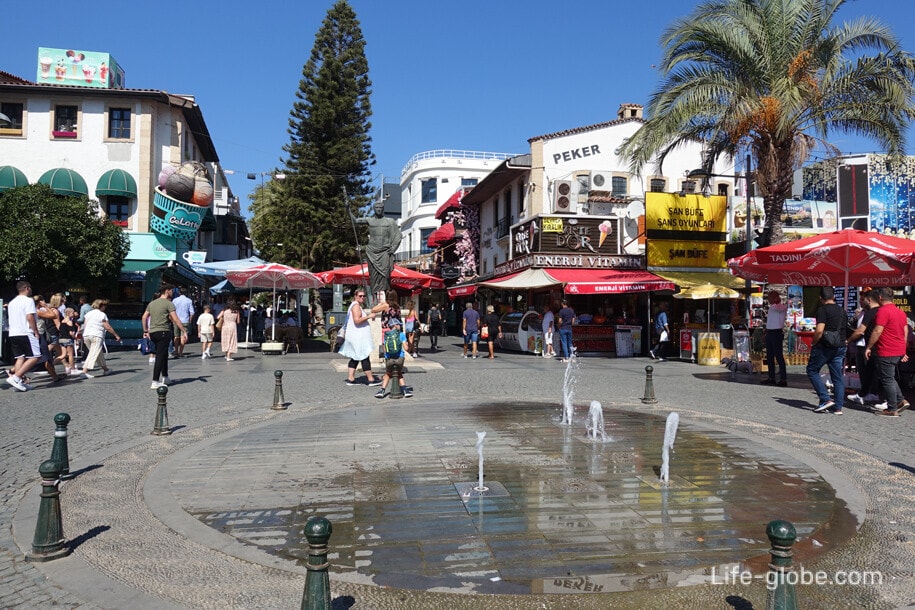
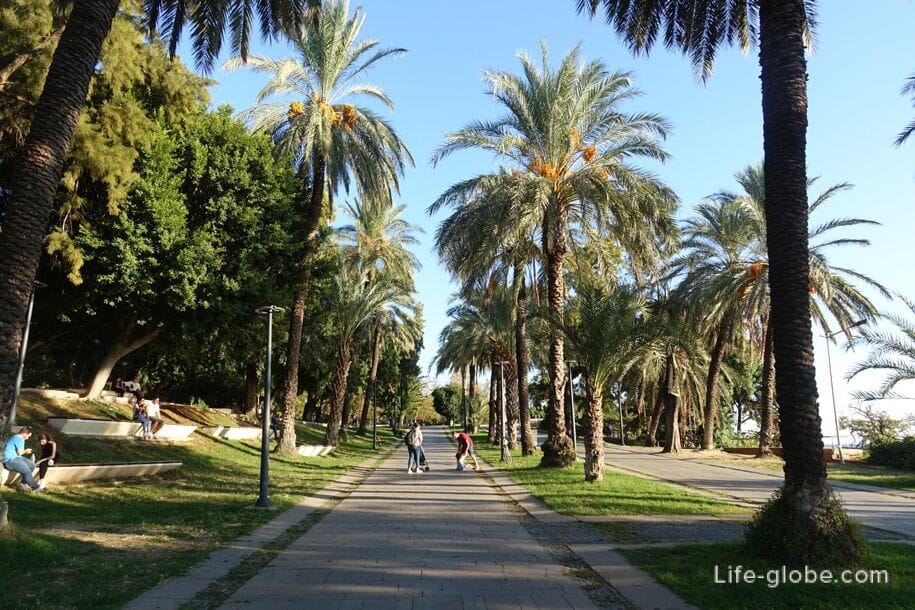
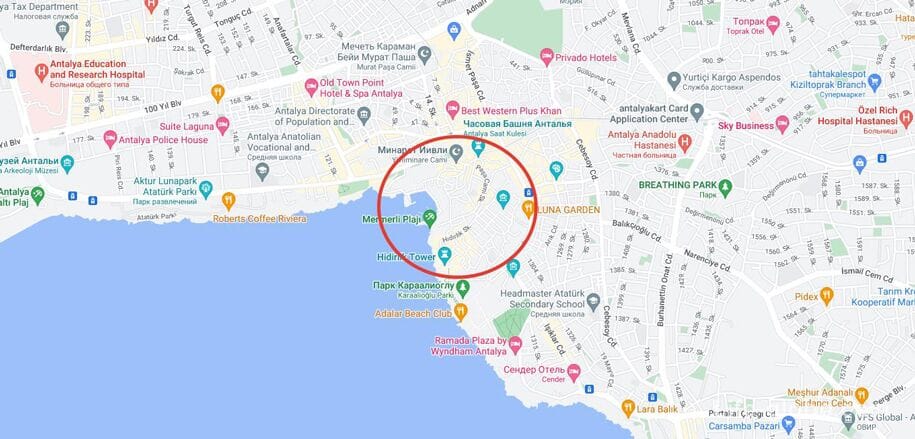
Kaucuk Hotel Adult Only features a garden, an outdoor pool and sun loungers. Breakfast is included in the room rate. Link to the hotel
Char Me Hotel features a seasonal outdoor pool, a bar, a shared lounge and a garden. Breakfast is included in the room rate. Link to the hotel
Hotel Tekeli Konaklari, located in traditional Turkish houses built around a courtyard. The hotel has a swimming pool and a restaurant. Breakfast is included in the room rate. Link to the hotel
Adalya Port Hotel, located near the old port. Breakfast is included in the room rate. Link to the hotel
Bacchus Pension Guest House, with a roof terrace with a picturesque view of the sea. Breakfast is included in the room rate. Link to the guest house
Mavi Avlu - Old town apartments with three bedrooms, terrace, patio and sea views. Link to the apartment
All accommodation facilities in Antalya (hotels, apartments, villas, guest houses, etc.), including in the old town, near beaches and more remotely from those, can be view and book here
You can get to Kaleiçi Old Town from Antalya Airport by tram, bus, auto or taxi.